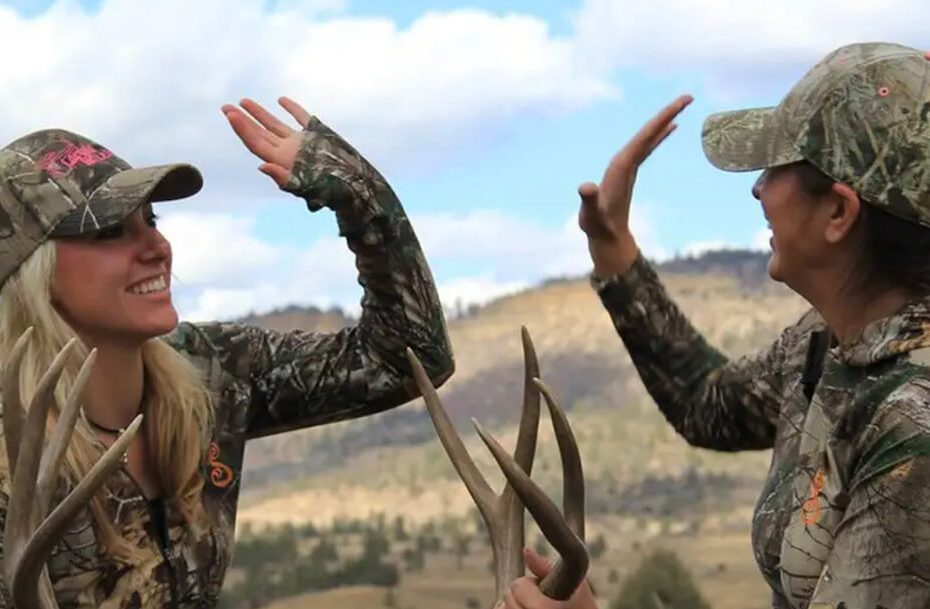
By Larry Keane
Snow and frost still cover the ground in the north as the 2022-2023 winter hunting seasons near an end. For in-state resident hunters and out-of-state travelers making excursions elsewhere, preliminary signs suggest it was a great winter for America’s greatest pastime.
Whether it was ducks, bucks, pheasant or other game, the renaissance of American hunting that began a few years ago is growing. That’s great news.
Positive Signs
One doesn’t need to look far to see the big numbers tallied over the fall and winter. Meat freezers will be stocked. One Oklahoma headline says it all.
“Oklahomans set to crush deer hunting record during 2022-2023 season.”
With one week still in the deer season, hunters have already harvested more than 125,300 deer by archery, rifle or muzzleloader. That total is approaching the 2020 COVID-era total of 126,290 and will likely surpass it.
“Hunting conditions have been really good,” Oklahoma State Department of Wildlife Conservation biologist Dallas Barber told The Oklahoman.
The totals on public lands are eye-popping. According to ODWC, total deer harvested on public land by year totaled 99,503 in 2019-20; 118,105 in 2020-21; 108,669 in 2021-22; and 125,381 (and counting) this year.
In Ohio, hunters took advantage of an extra weekend. According to the Ohio Department of Natural Resources, hunters checked 15,163 deer. Compared to recent years, that’s higher than average. In the same two-day period over the last three years, hunters checked an average of 12,944 deer and only took 9,619 deer on the same weekend in 2021.
SEE ALSO: Testing Mossberg’s Maverick 88 Security 12 Gauge
ODNR Division of Wildlife Chief Kendra Wecker praised hunters, saying, “Hunting is a way for people to enjoy being outdoors, provide sustainable food for their families, and contribute to Ohio’s legacy of wildlife conservation. Thank you to all who participated in a safe and successful weekend of deer hunting.”
More than 281,000 deer hunting licenses were purchased.
Pennsylvania isn’t being left out. More than 435,000 deer were harvested during the 2020-2021 season, compared to 375,000 in 2018-2019 and 316,000 in the 2015-2016. While some places have experienced hunting numbers decreasing, resident antlerless deer licenses in the Keystone State have gone up to 897,000 in 2021 from 843,000 in 2011, and increased overall since 2015.
Reporting from South Dakota stated it simply: “2022 pheasant season off to strong start in South Dakota.”
Reverberating Impacts
Successful hunting seasons have far-reaching impacts felt by hunters and non-hunters alike. For hunters, it means enjoying time with loved ones and friends and passing along the traditions of harvesting wild game. For some, it is a mount on the wall, an article in the local paper and a freezer full of delicious game meat.
It also means those less fortunate and who don’t hunt can benefit. Organizations like Hunters Helping the Hungry (HHH) help hunters coordinate with local meat processors that package harvested game to distribute to families through food pantries, senior centers, shelters, orphanages and churches.
SEE ALSO: The NEW Savage 1911 – Full Review
Successful hunting seasons also mean America’s public lands and wildlife refuges are cared for and accessible to the non-hunting public. Firearm and ammunition manufacturers pay excise taxes into the Wildlife Restoration Trust Fund, commonly known as the Pittman-Robertson trust fund. Hunters support those businesses when they purchase firearms and ammunition. Since the fund was created in 1937, excise taxes totaling more than $15.3 billion, or $22 billion when adjusted for inflation, have been paid into the fund, which are then distributed back to the states and are specifically designated to be used by state wildlife agencies for conservation and related purposes.
Industry Wildlife Win
One specific way NSSF helped ensure future hunting seasons are successful has been by advocating for and securing funding to research and combat the spread of Chronic Wasting Disease (CWD), a fatal disease that affects the brain, spinal cord and other tissues of cervids, including deer, elk and moose. When CWD is discovered, especially in a farm-raised population, the herd must be killed.
NSSF efforts during the 117th Congress yielded a major victory in the fight against CWD. The Chronic Wasting Disease (CWD) Research and Management Act (H.R.5608), was enacted through the Consolidated Appropriations Act of 2023. That funding bill authorized $70 million annually from Fiscal Year 2022 through Fiscal Year 2028 to combat CWD. The funding will go a long way to fight the disease and ensure deer populations remain healthy for future hunting seasons.
The positive signs from the 2022-2023 hunting season are encouraging and suggest the future is bright for America’s greatest pastime.
